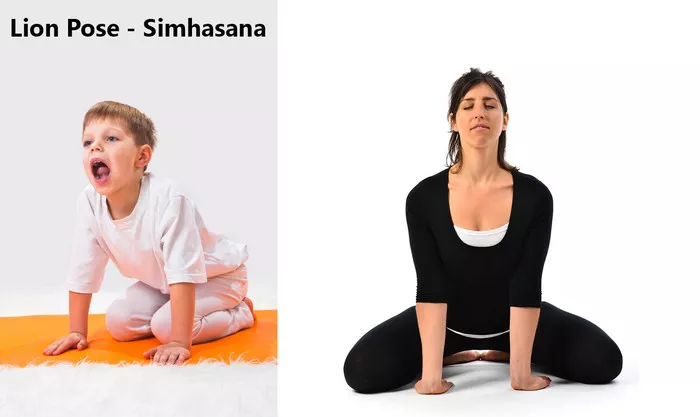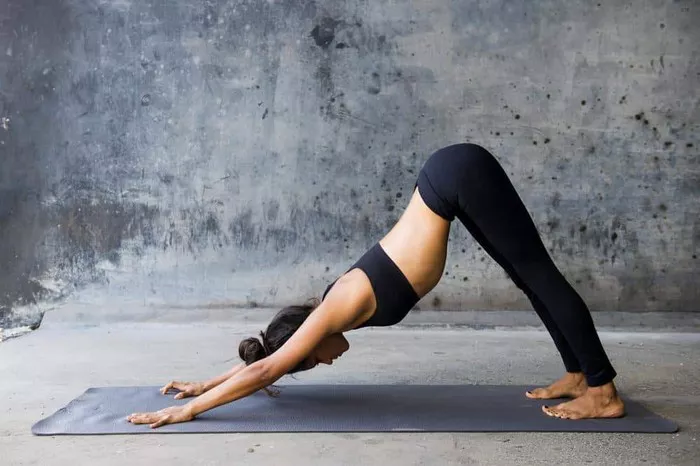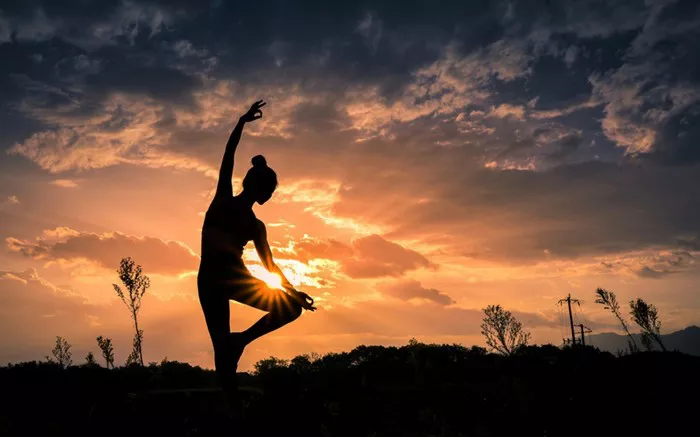Yoga, an ancient practice originating in India, encompasses a rich tapestry of poses, each with its unique blend of physical, mental, and spiritual benefits. Among these, the Lion Pose stands out for its distinctive symbolism and transformative effects on the body and mind. In this comprehensive guide, we delve into the depths of the Lion Pose, unveiling its origins, elucidating its symbolism, exploring its myriad benefits, discussing variations and modifications, providing step-by-step instructions, and offering essential precautions and contraindications.
Origins and Symbolism
The Lion Pose, or Simhasana in Sanskrit, traces its roots to the ancient yoga texts, particularly the Hatha Yoga Pradipika and the Gheranda Samhita. Simha, meaning lion, evokes the powerful yet graceful demeanor of this majestic creature. The pose embodies the qualities of courage, strength, and assertiveness, qualities that are symbolically invoked during its practice.
In yogic philosophy, the lion represents the fierce embodiment of the divine masculine energy, known as the solar principle or Surya. By assuming the posture of the lion, practitioners tap into this primal energy, awakening their inner strength and resilience.
Physical and Mental Benefits
The Lion Pose offers a plethora of physical and mental benefits, making it a valuable addition to any yoga practice.
Physically, the Lion Pose:
1. Releases Tension: The stretching of the facial muscles, tongue, and throat in Lion Pose helps release tension and stress accumulated in these areas, promoting relaxation and rejuvenation.
2. Stimulates the Throat Chakra: By activating the throat chakra, Vishuddha, Lion Pose enhances communication skills, self-expression, and creativity.
3. Improves Respiratory Function: The deep inhalation and forceful exhalation in Lion Pose strengthen the respiratory muscles, increase lung capacity, and enhance overall respiratory efficiency.
4. Tones Facial Muscles: Regular practice of Lion Pose tones and firms the facial muscles, reducing the appearance of wrinkles and promoting a youthful glow.
Mentally, the Lion Pose:
1. Enhances Confidence: The lion’s fearless gaze and roar-like exhalation instill a sense of confidence and empowerment, helping practitioners overcome self-doubt and hesitation.
2. Releases Pent-up Emotions: The cathartic release of emotions through the lion’s roar provides a therapeutic outlet for pent-up anger, frustration, or anxiety, promoting emotional well-being and inner peace.
3. Cultivates Mindfulness: The focused awareness required to maintain the lion’s posture cultivates mindfulness and presence, allowing practitioners to transcend distractions and connect with the present moment.
Variations and Modifications
Like many yoga poses, the Lion Pose offers variations and modifications to accommodate practitioners of all levels and abilities.
1. Seated Variation: For those with limited mobility or discomfort in the knees, the seated variation of Lion Pose can be practiced on a chair or bolster. Sit comfortably with the spine erect, and perform the facial expressions and breath work as usual.
2. Supported Variation: Placing a bolster or cushion beneath the hips provides additional support and stability, making the pose more accessible to beginners or individuals with lower back issues.
3. Dynamic Variation: Incorporating dynamic movements such as swaying the torso from side to side or moving the head in circles can intensify the stretch and add a playful element to the practice.
See Also: Compass Pose (Parivrtta Surya Yantrasana)
Step-by-Step Instructions
To practice the Lion Pose safely and effectively, follow these step-by-step instructions:
- Begin in a comfortable seated position, either cross-legged on the floor or kneeling on your heels.
- Place your hands on your knees or thighs, palms facing downward, and close your eyes.
- Take a few deep breaths to center yourself, grounding into the present moment.
- On an inhalation, open your eyes wide and gaze upward toward the space between your eyebrows.
- As you exhale forcefully through your mouth, open your mouth wide, stick out your tongue, and roar like a lion, making a sound akin to “haaaa.”
- Simultaneously, stretch your tongue downward toward your chin, while opening your fingers wide and spreading them apart like claws.
- Hold the posture for 3-5 breaths, maintaining a strong and steady gaze.
- Release the posture gently, returning to a neutral seated position, and observe the sensations in your body and mind.
Precautions and Contraindications
While the Lion Pose offers numerous benefits, it’s essential to practice with caution, especially if you have any underlying health conditions or injuries. Here are some precautions and contraindications to consider:
1. Neck or Spinal Injuries: Avoid excessive strain on the neck and spine by keeping the movements gentle and controlled. If you have a history of neck or spinal injuries, consult with a qualified yoga instructor before attempting the pose.
2. High Blood Pressure: The forceful exhalation in Lion Pose can temporarily raise blood pressure. If you have hypertension or cardiovascular issues, practice the pose mindfully and avoid overexertion.
3. Eye Problems: Individuals with eye conditions such as glaucoma or detached retina should practice caution when performing the intense gaze associated with Lion Pose. Focus on softening the gaze and maintaining a relaxed facial expression.
4. Respiratory Disorders: If you have asthma or any other respiratory condition, practice Lion Pose with moderation and awareness of your breathing capacity. Avoid straining or overexertion, and listen to your body’s signals.
5. Pregnancy: Pregnant women should avoid practicing the Lion Pose, particularly during the later stages of pregnancy, due to the intense abdominal pressure and potential strain on the pelvic floor muscles.
Conclusion
In conclusion, the Lion Pose is a potent yoga asana that embodies the strength, courage, and vitality of the majestic lion. By practicing this pose mindfully and with intention, practitioners can unlock a myriad of physical, mental, and spiritual benefits, empowering themselves to navigate life’s challenges with grace and resilience. As with any yoga practice, it’s essential to approach the Lion Pose with awareness, respect for your body’s limitations, and a willingness to explore its transformative potential.



















